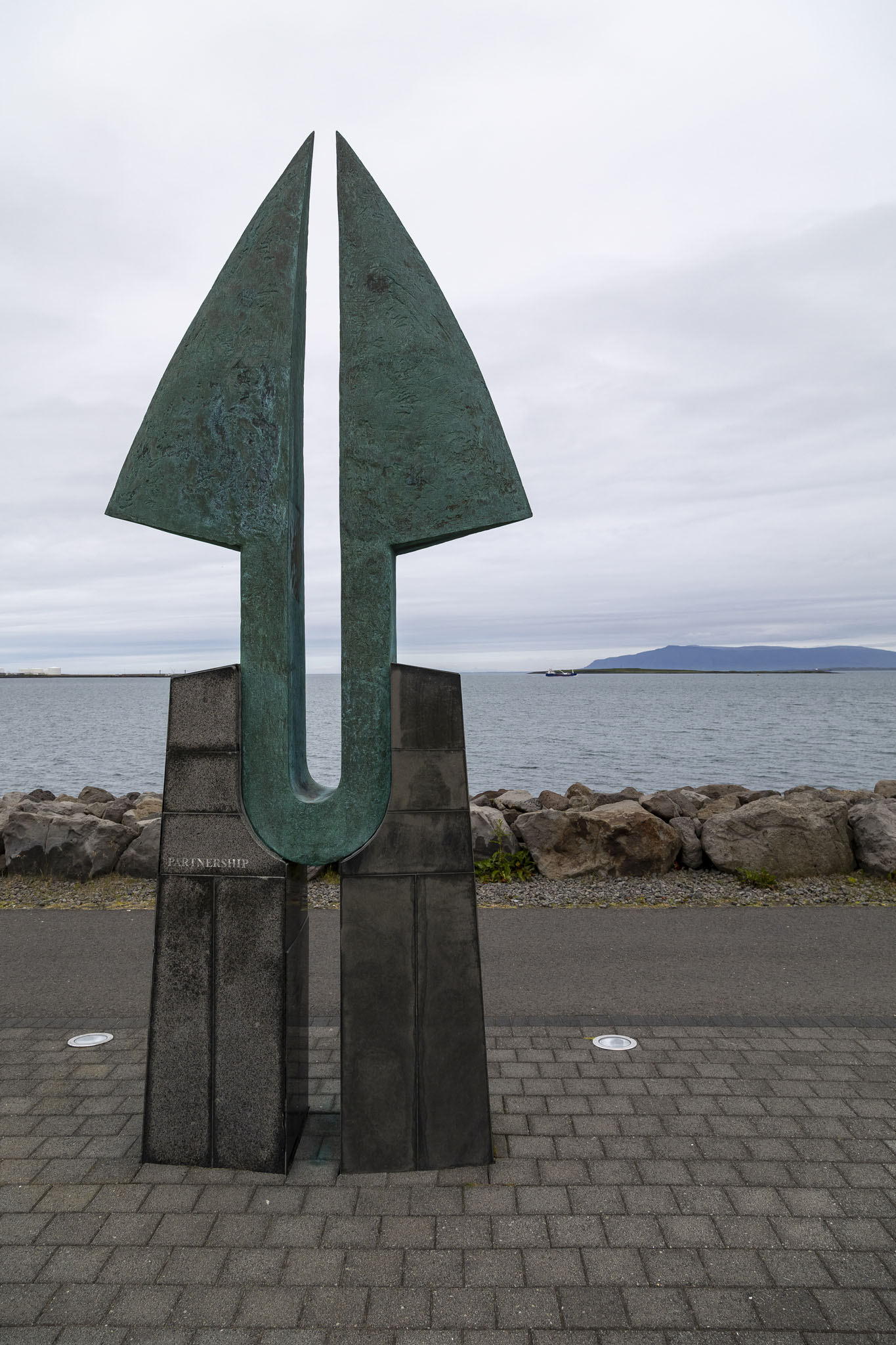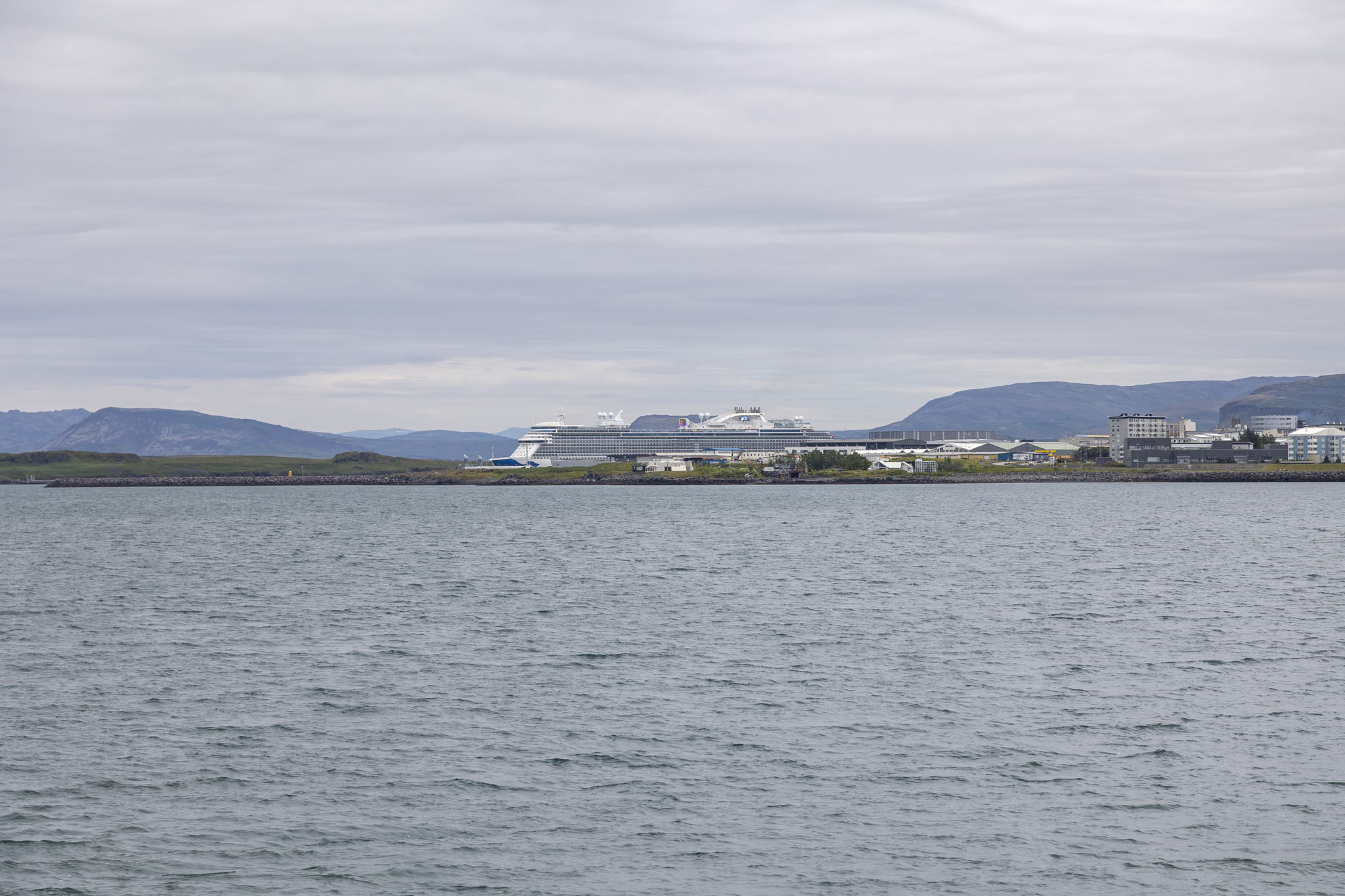“Whoa there, Mark! You’re writing about art sculptures in Reykjavík!? More art sculptures!? Haven’t you literally just posted about a walk along the northern shoreline of Iceland’s capital city? Didn’t you write about Laugarnes And Sigurjón Ólafsson Sculptures and then didn’t you express unbridled joy at the excellent public art exhibition that is the Recycled House in Reykjavík too?”
Yeah, I certainly did. But you know what? There are still more pieces of fantastic, often abstract, public pieces of art on which to feast the eyes on the walk from the cruise port to the city centre and dang it all to heck if I’m not going to write about a few more now. If you’re looking to simply walk from a cruise ship into Reykjavík then this is the important sort of thing that tells you yep, you’re definitely still on the right road, didn’t that guy with that website write some crap about it and post photos when we were researching, yes we can stop soon, look you can see the damn cathedral from here.
To be fair, you can’t really go wrong when walking into the city from the cruise port at Sundahofn. If you head for the road that runs along the coast you will indeed be able to spot the Icelandic capital’s most prominent and fairly central landmark, Hallgrímskirkja, from anywhere along it, and you can see that for yourself in the fourth photo below. This post in the Sky Princess Norway and Iceland cruise travelogue series will primarily be a photo dump for some of the other sights along that route; a route we took in July 2022 with the intention of visiting a few bars and a museum in the city.
The small, bright yellow lighthouse in Reyjavík is called the Höfði Lighthouse. You might think from first appearances that it’s old but this lighthouse was only built and placed on this spot of reclaimed land in 2019. However, its design is similar to those of lighthouses used in the harbour area in the 1910s here in Iceland. The platform around the upper part of the lighthouse tower is supposed to be reachable and part of an appeal to tourists but we didn’t see any way to it other than the closed door in the front that we decided not to try to open.
Höfði Lighthouse gets its name from the Höfði House over the road from it which you can see in the second photo below, its architecture looking somewhat out of place with that backdrop of modern buildings. Höfði dates from 1909 and was built for the French consul in the city at the time but was subsequently the home for a poet, a painter, the British Embassy, and, according to legend, a ghost. Its biggest claim to fame as a building, however, is that it hosted the 1986 summit between Ronald Reagan and Mikhail Gorbachev.
Samstarf or Partnership is a sculpture by Peter Smith, unveiled in 1991 as one of two pieces, the other located in Miami and displayed the following year. The sculpture celebrates fifty years of friendship between Iceland and the USA and is the largest bronze sculpture cast and finished in Iceland.
The Island Guard is a 2006 sculpture by Jóhann Eyfells, a sculptor known for his works influenced by chemistry and physics and the reactions between certain elements. I suspect that this is one of those sculptures that would be great for posed photos for tourists in Reykjavík but we’re not the sort of tourists who do that sort of thing so you’ll have to make do – and trust me, you’re better off this way – with just a picture of the abstract piece on its own.
Probably the most photographed sculpture along the northern shoreline is the Sun Voyager by Jón Gunnar Árnason. We’d taken pictures of it before when we visited Reykjavík in 2015, and a few days earlier on this cruise aboard Sky Princess we’d stopped at the port of Akureyri and found another artwork by the same sculptor in a similar style.
While we were photographing the Sun Voyager this time around we bumped into our friends from Sky Princess who’d taken the bus into the city for a walk and were about to head back to the bus stop to return to the ship. We pointed along the shoreline we’d just walked and mentioned the Recycled House from the previous post in this series, still visible, showing them some photos of it on our phones and camera. They changed their plans and went to explore that instead, and thanked us afterwards for the excellent little find.
Not an art sculpture now, but a distinctive form and wonderfully artistic bit of architecture on the north coast of Reykjavík is Harpa. This is a business centre, a venue for concerts, and Star Trek canon indicates it will be the inspiration for Borg Cubes after the Queen vacations in Iceland and decides to embrace the country’s oneness with nature in a hive-minded goal of incorporating the best elements of all life in the universe.
The Musician is a sculpture of the Danish cellist Erling Blöndal Bengtsson by Ólöf Pálsdóttir. He apparently played continuously for her as he sat for the initial modelling for the sculpture. The artwork was outside the original home of the orchestra elsewhere in the city, but when they relocated to base themselves at Harpa, the sculpture was relocated too at the request of Bengtsson’s widow.
It had been our initial intention to walk a little further on but despite being summer it was still Iceland and subject to chilly winds, we’d spent way longer getting this far thanks to frequent stops for photos of all the works of art on the coast, and our bladders were having words with us. Luckily for us, we knew of a nearby craft ale bar we’d visited a few times when we stayed in Reykjavík in 2018 called Skúli. It had toilets. And, of course, it also had beer. Any excuse for a drink.
After we’d had a short break – and bought a t-shirt in the bar too because it’s important for us cruise ship tourists to spend money in the local economy and keep them happy about our big ships visiting their home towns and cities so they don’t stop us visiting again in the future – we made plans to head towards a museum we’d thought about visiting on both previous times in Reykjavík but hadn’t managed for some reason.
On the way there we encountered a very strange public art performance piece by, I assume, local art students. To the accompaniment of music a couple of weirdly-dressed, alien-like characters were pursued in an odd, semi-choreographed dance of sorts by a Men In Black-style group. It would be hard to describe without video, but, luckily, I took video (temporarily removed).
That group proceeded to repeat that performance several times on this road through Reykjavík.
The final art sculpture before we reached our intended destination was The Water Carrier by Ásmundur Sveinsson. This abstract woman with water form was inspired by both the hardworking Icelandic women struggling with water in wintry conditions and by the mountain peaks that can be found all over the country. It dates from 1937 but it took until 2011 before it was moved to its present and originally-intended location after earlier objections by locals.
In the next post in this cruise travelogue series, on our third visit to Reykjavík, we finally descend the steps that lead to the former public toilets transformed into the Icelandic Punk Museum.





























